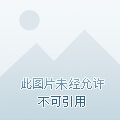Friends who have watched Japanese dramas have seen many of Japan's "strange" shapes, one of which is called "Tsukiyo head" hairstyle, it makes people scratch their heads, they take the initiative to shave off the middle part of their hair, only a handful of them in the back of the head, very strange, I believe few people can praise it good-looking, but "Tsukidai head" is very popular in Japan, what is the matter?

The head of the Moon Dynasty, is the hairstyle left by the ancient Japanese samurai, it has experienced more than 10 eras, the earliest record of it appeared at the end of the Heian Period, about the Tang Dynasty to the Song Dynasty period in China (618 ~ 1279), the end of the Heian Period of the Japanese Secretary of State Kujō Kanshi's diary "Jade Leaf" recorded: "Since the piece of honesty, Shi Zhongqing pointed out that the first, its sideburns are not correct, the Moon Dynasty is too bitter, the face is particularly damaged. ”
As we all know, during the Tang Dynasty, Japan often came to China to learn cultural knowledge, customs and customs, and political law, according to historical records, Emperor Shuming of Japan appointed 19 "Tang envoys" to study in China, and it can be said that the civilization of the Tang Dynasty directly affected the development of Japan. Therefore, regarding the origin of the "head of the moon generation", the first theory is that it originated in China.
At that time, during the turmoil between the Northern Song And Southern Song Dynasties, the Jurchens gradually occupied the dominant position, they fought on horseback for many years, and their hair must not obstruct the field of vision, so "tying braids" was one of their habits. What we are more familiar with is the hairstyle of the princes in the Qing Palace drama, such as the braid of the five brothers in "Huan Zhu Ge Ge", which is also shaved around the head, and the hair below is tied up, which is very convenient when moving and fighting.
At that time, Japan often came to China for trade and exchange activities, they felt that the hairstyles of the Jurchen people were very peculiar and effective, and they were also recorded in the data, imitated, used in actual combat, and in battle, the hair did not block the soldiers' vision, but this shaving was only used in the samurai class.
The second reason, according to the Taiping Chronicle, Book V, is that the head of the Moon Dynasty was mainly used on the battlefield. With the advent of the Warring States era, large and small wars frequently, long-term combat so that a large number of soldiers because of sweltering heat, sweating caused by scalp inflammation, in order to prevent such a situation, soldiers at the beginning with forceps to pull off the hair on the top of the head, but this is both painful and inconvenient, simply shave off, so the moon generation head began to popular.
By the Edo period, in addition to the koshiro, Tsukiyoto had become almost the most popular hairstyle for Japanese samurai and even civilian men, and ordinary men had imitated this hairstyle because of their admiration for samurai, even if they did not need to fight. With the development of the times, there are more and more improved versions of the moon head, and we can intuitively experience it from the diagram.
The third reason is similar to the problem of "hair loss" that many of us in modern times worry about. There are many reasons for human hair loss, such as staying up late, stressing, excessive brain use, etc., at that time, Japan's senior leaders had hair loss problems. The leader above was bald, and the subordinates below felt that this was inappropriate, so they shaved their hair early to avoid embarrassment from their superiors.
The Tsukiyō period continued into the Meiji era, when the Meiji Restoration, with Emperor Meiji at its core, overthrew the Tokugawa shogunate for a hundred years and began to implement "total Westernization", declaring in 1871 the Order for the Removal of The Sword of The Scattered Hair, which declared that you could freely choose to cut your hair and take off your sword. This meant that the samurai could disarm their swords without having to knot the knotted skull (qū) and spread their hair.
In March 1873, Emperor Meiji himself let go of his hair, and the bureaucrats below followed suit, and Tsukiyo slowly withdrew from the mainstream.
References: "Taiping Chronicle", "Loose Hair And Knife Removal Order"